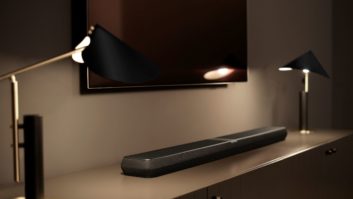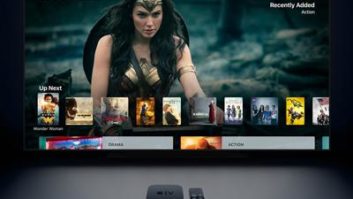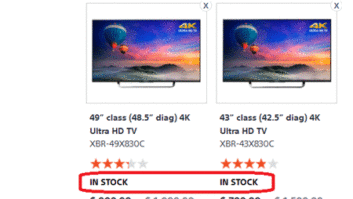Before complaining to my editor, know that I mean no disrespect; I’m as patriotic as the next person. On the other hand, the pun in my headline is somewhat irresistible when addressing the soon-to-be ubiquitous USB Type-C (or simply USB-C) accessories connector standard.
Can you “see” it? Yes, you can, and on an increasing variety of products that you will have to deal with not only for your own business and personal use, but in client installations, as well. Where can you see it? As I write this a few weeks before the International Consumer Electronics Show (CES), the list of source devices and accessories is somewhat limited, but growing. The bigger question, however, is whether or not you can see what USB-C is, see what it does, and then decide how or when should you use it.
Driving Demand
The demand for USB-C cables, accessories, and adapters will be driven by the likes of the MacBook, Google’s Chromebook Pixel, and other various phones. Indeed, seeing this open-market connector used on the MacBook for power and on the new Apple TV for service upgrades rather than something proprietary, along with being the single port for connectivity and communication indicates that there is a future here.

USB Type-C hubs facilitate the connection of standard USB peripherals to devices such as the Chromebook Pixel models with USB-C connectivity.
Lightning connectors used in current iPhones and iPads share some important characteristics with USB-C cables. Both are symmetrical, or in plain language, reversible. That means you can plug them either way; there is no longer the “is it up or down” conundrum everyone faces with older USB connectors. If that was all that USB-C offered it would be worth it, but there is more. Much more.
Power over a variety of connection cables is not new, as MHL and USB 2.0 offer it, but USB-C takes it to a higher level with the capabilities inherent in USB 3.1. That means that a product can send up to 5 amps at 20 volts, or 100 watts, down the line. That’s enough to power virtually any laptop and many monitors, or supply charging current to a wide of variety of phones and/or tablets at the same time.
The 10 Gbps data rate possible through USB-C and the charging capability belong to that standard, regardless of the connection type. In other words, products may offer those specs and more through any USB-compatible connection, not just USB-C. Let’s emphasize the “may” in the ability to offer features, as the connector type itself doesn’t guarantee what it is used for any more than the standard specifies that full-sized Type A, smaller Micro-B 3.0, or USB-C must be used for USB 3.1.
That is when the possibility for confusion starts and where you must be vigilant when putting a multicomponent ecosystem together. In many respects, this no different from how the guardians of HDMI mandate that devices clearly specify which capabilities and attributes a product has. Yes, most HDMI “Version 2.0” products now go out to 600 MHz, offer ARC and similar, but those items and anything else above the base standard is optional. You have to carefully review the spec sheets to see what a device provides for HDMI, and now you will have to do it for USB-C.
USB-C Comparisons
Going back to the combination of the small size and symmetrical layout of USB-C, when combined with the capabilities of the USB 3.1 specs, it is clear that USB-C is the connector of the future for an incredibly wide array of product categories. One more time: the appearance of a USB-C connector does not tell you what it is used for any more than the presence of a USB Micro-A connector lets you know the data rate, power handling capability, or anything else. Indeed, some USB jacks are used only for delivering or ingesting power with no data use at all. Given the ubiquity of USB for chargers, that may even be a more prevalent use for USB connection than for data.

USB C to TSB Type A adapters allow “standard” USB-equipped products to seamlessly interface with devices sporting only USB-C.
So, with that introduction and the admonitions, where will you be able to “C” this connection point and how do you use it?
One place where it is beginning to pop up is on phones. The ability to use a single jack for charging, audio output, and video output is appealing, but to split off the various functions you will need to look for the adaptors that are now reaching the market. Suggestion: look for a USB-C pass-through so that you can cascade the functionality of the jack to multiple devices.
Phones have occasionally used MHL as a means of playing out both stills and video, and USB-C is likely to accelerate that usage. Known as “MHL Alternative Mode,” this variation will enable connection for audio and video between sources, projectors, monitors, and VR/head-mount products. MHL Alt Mode was originally developed with the forthcoming “superMHL” format in mind, but to make matters interesting, a connector that looks like the USB-C will be the “Level 3” version of superMHL and 8K video, but the “1” and “2” Level MHL versions will be compatible with USB-C. Given MHL’s “kissing cousin” relationship to HDMI, MHL Alt Mode using USB-C not only sends the audio/video content but also allows for integrated control via “Remote Control Protocol.” RCP acts in a fashion similar to CEC, so that one device or remote can talk to and control others in the system.

MHL Alt Mode is one of the ways that a USB-C connector may be used to connect a source device to various display devices.
Another format that has jumped on the USB-C bandwagon is DisplayPort Alt Mode. While it does not have RCP–not surprising given DisplayPort’s roots in enterprise video–it does permit the 100-watt power capability, backwards compatibility with VGA and DVI, and the ability to work with not only 4K, but 8K displays, as well.
Rounding out a hat trick of format compatibility, Intel has announced that Thunderbolt 3 offers up to 40 Gbps speed, which is enough to feed two 4K displays. Looking at it another way, sending Thunderbolt 3 delivers approximately 20 Gbps over passive copper. When active cables are used, however, Thunderbolt 3 (at lengths only up to two meters) will deliver 40 Gbps connectivity, four times that of USB 3.1 through the same connector.
The easiest way to avoid install problems is to simply look at equipment spec sheets and also for any logos on the connector heads. For example, when a USB-C connection is designed for Thunderbolt, you’ll see the “lightning bolt” logo instead of the familiar USB “Trident.” Also plan to test things out in the shop before installation. A little time spent before the installation may save you loads of time and trouble later.
Where It Will Be Used
Knowing USB-C’s capabilities brings us back around to what you can do with it. The formats and signals discussed above are the domain of source devices, and that will become even more critical than it is now as smartphones and tablets join both desktop and laptop computers as a source of entertainment programming via streaming services. Once that is taken care of, however, what do you do with the signals, particularly in the case of a product such as the MacBook?
USB-C can route audio/video content, power devices, stream data at incredible rates, and do a great deal more. There’s a promise of the technology doing two things at once, but it takes a bit of work. Apple, as one of the first large-scale adopters of USB-C, sets the baseline with USB-C to “standard” USB so that you can then attach a USB hub for your peripherals. They also have USB-C to either VGA or HDMI with a pass-through so that you can connect to an external display and then use another USB Type-A hub.

The USB-C port on the rear panel of the new AppleTV is currently intended for “service/updates” only, and the actual output is via HDMI. Who knows, this may change in the future.
That’s nice for the road, but not all that practical for office applications. For that environment, look to more accessory-focused brands for value-priced USB-C to gigabit ethernet adapters, USB-C to USB-A multi-port hubs, multi-purpose USB-C to USB-A along with an SD card reader, and so on. I’ve also seen the first USB-C-equipped flash drive stick released. Post- CES, expect to see more of this.
As always, a few caveats are in order. Along with making sure that the first device in the chain has what is required, you need to apply the same rule to accessories. For example, do they convert USB-C to USB 2.0 or 3.0? Depending on what is being connected to the computer, that may or may not make a difference. This is for cables, as much as for devices.
Finally, as much as I am bullish on the future of USB-C, at this point in time there are some things that you cannot do directly with USB-C. For example, there are no expansion hard drives, monitors or projectors, wireless adapters for keyboards or mice, routers/Wi-Fi access points, and more that you may connect directly via USB-C. Again, that will almost certainly come sooner than later, but for now you will want to stock up on all sorts of adapters.
As the new year moves forward we’ll all see more uses and products that will utilize what some are saying may be (finally!) the one single connection for computers and phones/tablets that will replace current legacy connections sooner than you might expect. The sooner you “C” that, know it, and prepare for it, the better off your business will be.
Michael Heiss ([email protected]) is a CEDIA Fellow and contributing editor to Residential Systems in Sherman Oaks, CA.






